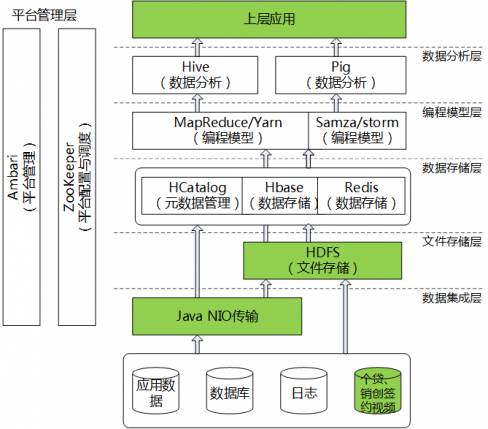摘要:設備和IP是兩個不同的概念。設備指的是計算機硬件或任何電子設備,而IP則是互聯網協議地址,用于在網絡中唯一標識設備。設備可以連接到網絡并通過IP地址進行通信。理論上,每部連接到網絡的設備都需要一個獨特的IP地址以實現正常通信。實際應用中,了解設備和IP的區別對于網絡配置、網絡安全及數據管理至關重要。通過深入了解其理論差異,可以更好地理解網絡運作方式并優化網絡性能。
本文目錄導讀:
在當今信息化的社會,設備和IP是兩個常被提及的概念,雖然它們都與網絡連接息息相關,但它們在實際應用中的功能和角色卻大相徑庭,本文將詳細解析設備和IP的區別,并通過實際數據來說明它們各自的重要性。
設備
設備通常指的是任何能夠連接到網絡并進行通信的物理硬件,這包括但不限于計算機、手機、平板電腦、服務器、路由器等,設備的主要功能是與用戶進行交互,執行特定的任務或提供特定的服務,設備具有硬件和軟件組件,共同協作以完成各種任務,計算機可以處理文檔、播放視頻、瀏覽網頁等,設備是網絡的基礎,是數據傳輸和處理的載體。
IP
IP,即互聯網協議,是一種使設備能夠相互通信的規則和標準的集合,它定義了設備如何在網絡上發送和接收數據,每個連接到互聯網的設備都有一個獨特的IP地址,類似于家庭地址,用于識別和定位設備,IP的主要功能是實現網絡間的通信,使得不同的設備可以互相交換信息,IP地址是網絡通信的關鍵,沒有IP地址,設備就無法在互聯網上被識別和通信。
設備和IP的區別
設備和IP之間的主要區別在于它們的職能和角色,設備是網絡的硬件基礎,用于執行各種任務和處理數據,而IP則是使設備能夠通過網絡進行通信的規則和標準,設備沒有IP就無法在互聯網上被識別和通信,而IP則依賴于設備來執行各種網絡任務和操作,設備是物理存在的,可以被觸摸和使用,而IP則是一種無形的協議和標準,存在于設備之間通信的過程中。
實際數據說明
為了更好地說明設備和IP的區別以及它們的重要性,我們可以引用一些實際數據,以全球互聯網為例,每天有數十億的設備通過互聯網進行連接和通信,這些設備包括個人電腦、手機、服務器等,這些設備之所以能夠互相通信和交換信息,就是因為它們都配備了IP地址,根據互聯網工程任務組(IETF)的數據,全球每天大約有數十億次的IP數據包在網絡中傳輸,這表明IP在互聯網通信中的重要性不言而喻,設備的種類和數量也在不斷增加,推動了互聯網的發展,根據國際數據公司(IDC)的報告,全球每年新增的設備數量也在不斷增加,這些設備的增長推動了互聯網的發展,也進一步凸顯了IP的重要性,沒有設備,就沒有數據的來源;沒有IP,設備就無法進行網絡通信,設備和IP是相互依賴、共同推動互聯網發展的關鍵因素。
設備和IP是互聯網中不可或缺的兩個要素,設備是網絡的硬件基礎,用于執行各種任務和處理數據;而IP則是使設備能夠通過網絡進行通信的規則和標準,它們之間的關系密切,相互依賴,共同推動互聯網的發展,通過實際數據的分析,我們可以更深入地理解它們各自的重要性以及它們在互聯網中的作用。
文章英文部分(以英文關鍵詞“設備和ip有什么區別,實際數據說明”為基礎):
Difference between Device and IP: Detailed Analysis and Real Data Explanation
I. Introduction
In today's information society, the concepts of device and IP are often mentioned. Although they are both closely related to network connectivity, their functions and roles in practical applications are quite different. This article will analyze the difference between devices and IPs in detail and illustrate their respective importance through actual data.
II. Device
A device generally refers to any physical hardware that can connect to the network and communicate. This includes computers, mobile phones, tablets, servers, routers, etc. The main function of a device is to interact with users, perform specific tasks or provide specific services. Devices have hardware and software components that work together to complete various tasks. For example, a computer can process documents, play videos, browse the web, etc. Devices are the foundation of networks, the carrier of data transmission and processing.
III. IP
IP, or Internet Protocol, is a collection of rules and standards that enable devices to communicate with each other. It defines how devices send and receive data on the network. Every device connected to the Internet has a unique IP address, similar to a home address, used to identify and locate the device. The main function of IP is to enable communication between networks, allowing different devices to exchange information. The IP address is the key to network communication, without which devices cannot be identified and communicated on the Internet.
IV. Difference between Device and IP
The main difference between devices and IPs lies in their functions and roles. Devices are the hardware foundation of networks, used to perform various tasks and process data. IPs are the rules and standards that enable devices to communicate through networks. Without IPs, devices cannot be identified and communicated on the Internet, while IPs rely on devices to perform various network tasks and operations. In addition, devices are physical and can be touched and used, while IPs are invisible protocols and standards that exist in the process of device communication.
V. Real Data Explanation
To better illustrate the difference between devices and IPs as well as their importance, we can refer to some actual data. Taking the global Internet as an











 魯ICP備18003477號-1
魯ICP備18003477號-1 魯ICP備18003477號-1
魯ICP備18003477號-1
還沒有評論,來說兩句吧...